It might be chilly and wet, but at least we know spring is just around the corner. The mornings and evenings are getting just that little bit lighter. Daffodils are poking up their heads to say hello.
We’re reaching the end of winter and that can make gardeners a bit impatient to get started.
But August is really a great time get ready for spring. Big tasks include:
- Order your seeds – if you have a friend nearby, combine your orders to save on shipping and meet any minimum order requirements.
- Source your seed potatoes and get them chitting if you haven’t already.
- Buy or make seed-raising mix.
- Clean up your pots and seed-raising trays to help prevent disease.
- Weeding, feeding, and mulching.
- Pruning and spraying fruit trees.
Zones
Some districts can get away with things others can’t at different times of the year.
Living in the Far North, I have a very long growing season and can start grow some things my friends further south aren’t quite ready for.
So where necessary, I’ll be referring to the zones shown on this map if the advice only applies to some areas.

Brassica are back
You can get a round of broccoli, cauliflower, cabbage, or kale in now.
Brassica don’t love the warmth that comes with summer and so sowings made at this end of winter can be prone to shooting to seed. It takes around 3 months for your brassica to produce your vegetable, so think about what the weather is likely to be in October-November.
There is a fairly limited runway at this time of the year for those of us in Zone 1, and planting seedlings should be a priority this month. But Zones 2 and 3 might have time to get another couple of sowings in.
Potatoes
I’m going to be planting our early potatoes this month. I’ve had them chitting for a few weeks and they’re looking ready to grow!
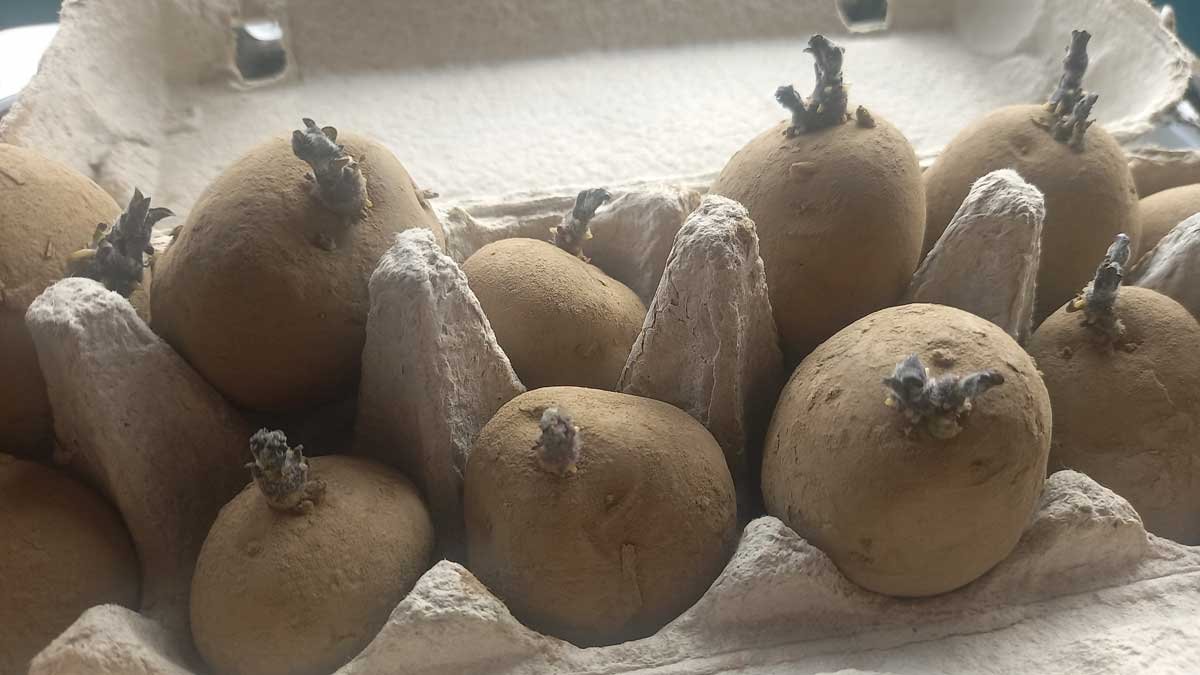
Hopefully I’ll be able to protect them from frost with mulch through til about mid-September when we’ll be past our last-frost date.
Early potatoes can be planted anywhere from now through to about November. Early varieties grow pretty fast and are best eaten directly from the garden – they won’t store like a ‘main crop’.

Planting Potatoes
Potatoes can be planted as soon as the last frosts pass. Find out what to do now to great crop next season!
I’ll also be on the lookout for my main crop seed potatoes this month. We like to grow Agria and Desiree potatoes. If you like Agria, I’d really encourage you to give Desiree a grow.
They have similar cooking properties, but with red skins. And – at least in my garden – they are significantly better growers with fewer diseases and higher yields. It’s worth trying something new occasionally.
If you really want to super-charge your potato-growing knowledge, I really rate this episode of the Joe Gardener Podcast – Growing Epic Potatoes: Everything to Know From Before You Plant to Storing the Harvest.
Direct sowing this month
Peas can be planted directly into the garden for a spring harvest. 3-4 seeds per person in your household, per month, means you can stretch your harvest out to Christmas.
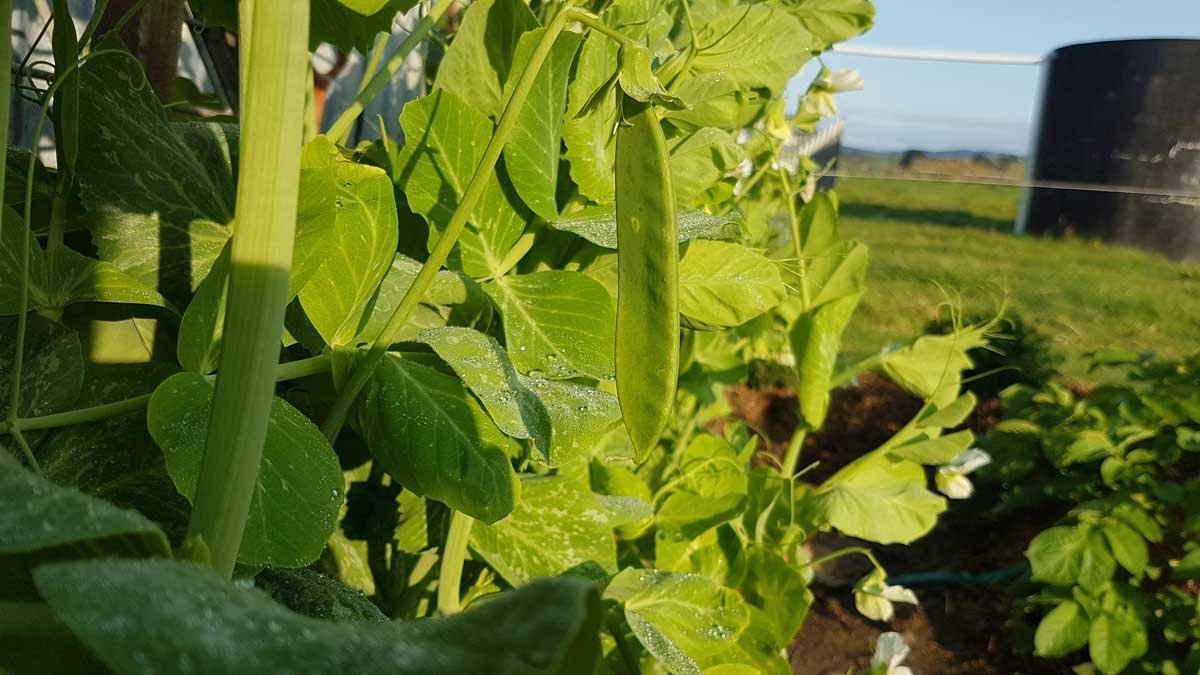
Planting peas
Ever wanted super-fresh peas? They take a bit of work, but nothing compares. Here’s everything you need to know!
Radish can also be sown directly into the soil. Radishes grow fast, break up the soil (especially the large daikon varieties), the tops can also be used as a salad green or stock/poultry food, and they are so freaking easy to grow!
Sow a few radish seeds directly into the garden every month from now until about February. One packet of seed should do most households an entire season.
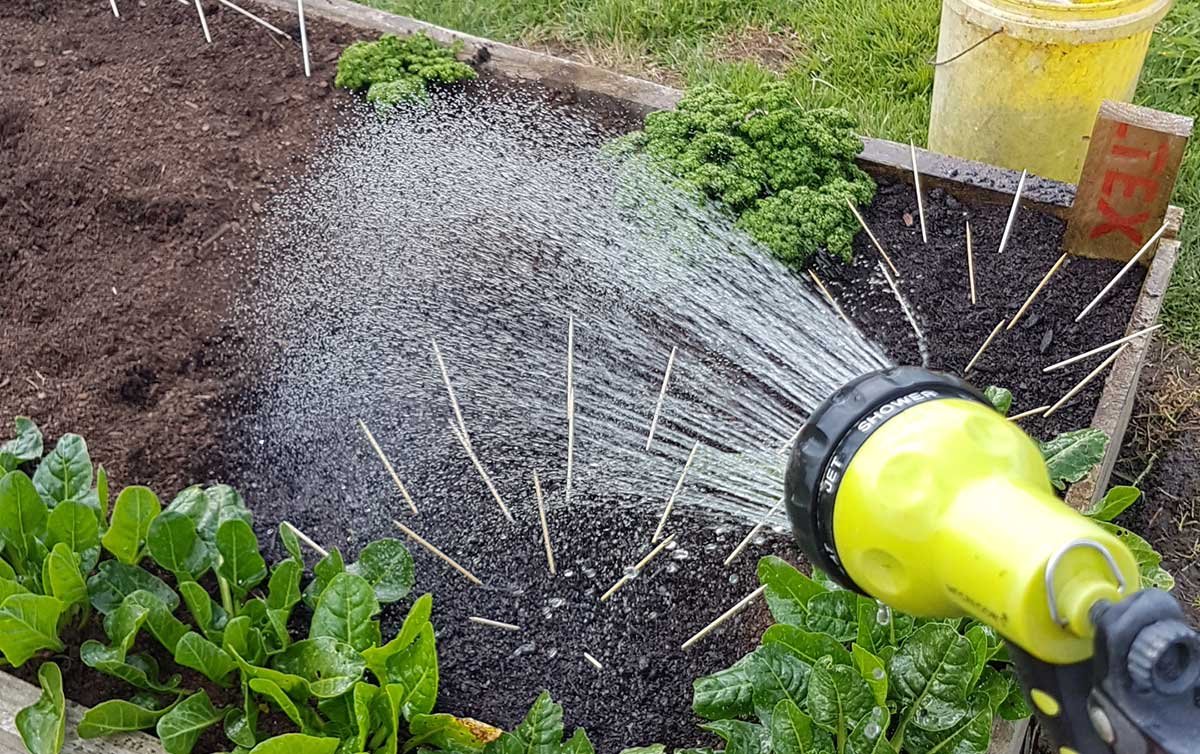
Direct Sowing Guide
Direct sowing is spreading seed in the place you want to grow it. This is the best way of getting good results for some crops. Find out which ones!
Lettuces, silverbeet, beetroot, carrots (zone 1), spinach, and turnip can all be directly-sowed into the garden this month too.
Red, brown, and spring onions can also be direct-sown. Check out my onion-growing tips in the May garden guide.
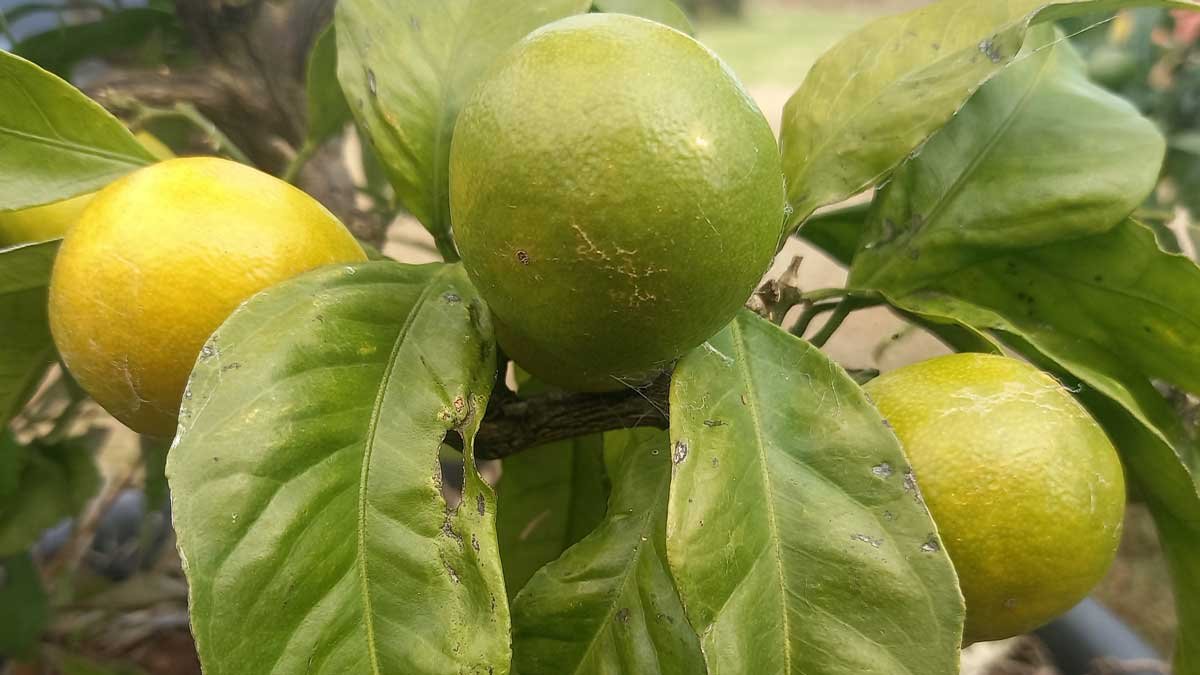
May in the Garden
As the weather turns cooler, there’s still a few jobs to keep you busy in the garden.
Starting summer veggies
Fresh seed orders arriving in mailboxes this month mean now is about the time gardeners start itching to get their summer vegetables going.
Starting your seeds indoors now can mean you’re either making things easier or harder on yourself.

Sowing Seed for Transplant
Keen to grow from seed this season? Get your plants off to the best start.
If you’re looking to have a good year with capsicum, chilli, or eggplant, you can get seeds started indoors now.
Extra heat via a heat pad will come in handy if you have it. They can take a few weeks to pop up and start slow, so it’s good to give them a head-start.

Gardening Equipment You Won’t Regret Buying
Some of my favourite pieces of equipment to take your gardening to the next level.
You can also start tomato seeds indoors now if you’re really keen – though in previous years I’ve come to believe this extra month doesn’t really give much of an advantage.
Hold off on the courgettes, cucumbers, melons, and pumpkin for now. They are pretty quick to grow from seed and will quickly outgrow your indoor spaces. It’s not quite warm enough to let them fend for themselves outside even in the ‘Winterless North’. Best to wait another month or two.
Pip fruit
Last chance to get out and prune your apple and pip fruit trees. If you’re not-quite-sure what to do here, I’ve got a 20-page pruning guide just for you.
If you have suffered from fungal issues in previous years, then it’s also time to get on top of your spraying – see the notes below.
Stone fruit
Keep an eye on your trees for flowers and leaf growth.
If you have had fungal issues with your trees in previous years then it’s really important to spray your trees before the cycle takes hold for another season.
Copper and conqueror will help to address various fungal problems and pest burden. Both sprays are organically certified and there are no interactions between them, so you can do both at the same time.
Spray all the leaf spurs and flower buds. Do this while your tree is still dormant (not in flower). While both sprays are organic, no-one really wants copper content in their honey.
Citrus
Last month I warned it was time to get onto your citrus pruning and really – the time is now!
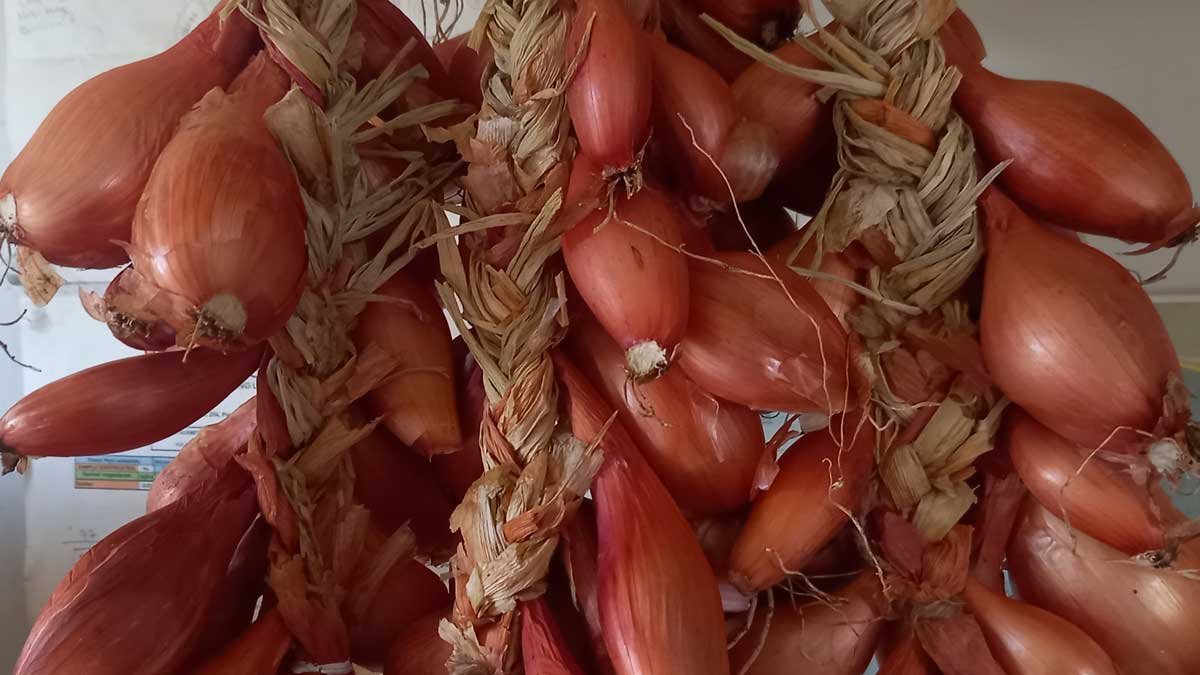
July in the Garden
Winter might be upon us, but there’s still plenty to do in the garden.
Conqueror is still effective against any infestations you hold.
As it’s an oil, it doesn’t have a withholding period – just make sure you wash your fruit if you’re planning to use the rind.
Bed prep
If you’re still itching for something to do in the garden itself, go get it ready for spring.
Remove the weeds while they’re still little and slow-growing. Then add a layer of organic matter like compost. When was the last time you emptied your compost bin? Maybe you won’t even need to buy that this year.
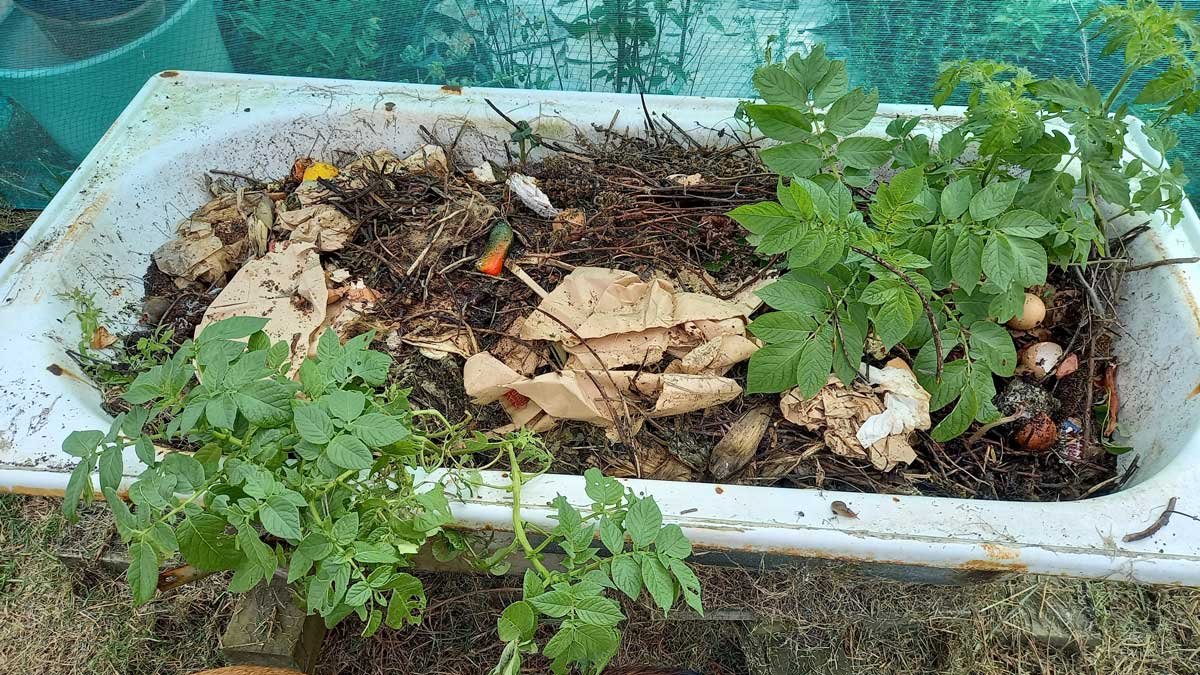
Resetting the Worm Farm
The worm farm is full and ready for a re-set! This week I emptied our worm farm all out, then filled it back up again.
Or reset your worm farm and add the worm castings to your garden.
Chuck on some blood and bone and lime if you have them. Rake them in gently to evenly spread them out. Worms, rain, and other natural processes will take over from here.
Finally, throw a layer of mulch on your garden bed. My favourite mulch is mown grass because we always seem to have it. I let it ‘age’ for 3-5 days in a pile before placing it out.
Make sure wood mulch is at least 12 months old before placing it on your beds, and never incorporate it into your soil. Wood mulch can hog the nitrogen in the soil while it’s breaking down, meaning your plants will be missing a very vital nutrient!
On your marks
Right now, gardeners are on the starting blocks, getting ready to start the marathon that will be the 2024-25 growing season.
If you’re still running the risk of taking off before the starting gun; then get out there and tidy things. Organise your spaces and scrub your equipment. Starting plants too early can be almost as bad as starting them too late. I know those new seeds are calling, but just wait a little longer before you start running for gold.
September is when the real work starts, so rest up while you can. I’m sure I’ve just given you enough to get on with for now!



Hi Kat,
Really enjoy following you and reading your monthly guides. Just wondering what you think of using old / rotten silage or baleage as mulch (I’ve been offered some free). I am also.in the North and have clay soil so.always looking at ways to.boost the organic content. I don’t want to get over run with weeds or cause more harm using this – appreciate your guidance with this.
PS. Giving Desiree potato’s a go this season on your recommendation
Hi Annie, Oh I’ve been through this before. We got given one about 4 years ago and there’s a couple of blogs about it somewhere on this website (one, two, three). It’s great organic matter, however your concerns about weeds are valid. I found better success turning it into a giant compost heap on top of one of my beds. Essentially layered the silage with cow manure and hot-composted it. That produced fewer weeds than the pure mulch. The other option is to go Ruth Stout and use it very thickly as a mulch – at least 15cm thick. Not an experiment I ran, but Ruth always reckoned the thick mulch layer made any weeds easier to pop out, if she got them at all. Good luck, and I hope you enjoy the Desirees!